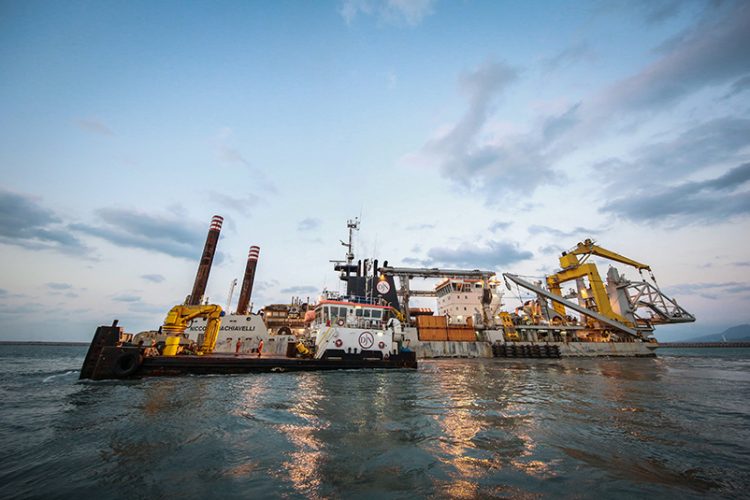Safety Protocols and Best Practices
Dredging operations are essential for maintaining navigable waterways, preventing floods, and facilitating construction projects. However, these operations can be hazardous without proper safety protocols and best practices. Ensuring the safety of personnel, equipment, and the environment is paramount in any dredging project. This article explores the safety protocols and best practices in dredging operations, the importance of training and certification for dredging personnel, and an analysis of past incidents to draw valuable lessons.
1. Comprehensive Risk Assessment
Before commencing any dredging operation, conducting a thorough risk assessment is crucial. This involves identifying potential hazards, assessing their likelihood and impact, and implementing measures to mitigate these risks. Key aspects of a risk assessment include:
- Site Survey: Understanding the geographical, hydrological, and ecological characteristics of the dredging site.
- Equipment Evaluation: Ensuring that all dredging equipment is in optimal working condition and suitable for the specific project.
- Environmental Impact: Assessing potential impacts on local wildlife, water quality, and surrounding habitats.
2. Personal Protective Equipment (PPE)
The use of appropriate PPE is essential for protecting workers from various hazards. Key PPE for dredging operations includes:
- Hard Hats: To protect against head injuries from falling objects or equipment.
- Life Jackets: Essential for personnel working near or on water to prevent drowning.
- Safety Glasses and Face Shields: To protect against flying debris and chemical splashes.
- Hearing Protection: To prevent hearing damage from prolonged exposure to loud machinery.
- Protective Clothing: Including gloves, boots, and high-visibility vests to protect against physical and chemical hazards.
3. Equipment Safety
Ensuring the safety of dredging equipment involves regular maintenance, inspections, and adherence to operational guidelines. Key practices include:
- Routine Maintenance: Scheduled maintenance to prevent equipment failure and extend the lifespan of machinery.
- Pre-Operational Checks: Inspecting equipment before use to identify and rectify any potential issues.
- Emergency Shutdown Systems: Ensuring that emergency shutdown mechanisms are in place and functional to prevent accidents.
4. Environmental Safety
Minimizing the environmental impact of dredging operations is a critical component of overall safety. Best practices include:
- Silt Curtains: Using silt curtains to contain suspended sediments and prevent water pollution.
- Waste Management: Proper disposal of dredged materials and other waste products.
- Wildlife Protection: Implementing measures to protect local wildlife, such as scheduling operations to avoid breeding seasons.
5. Emergency Preparedness
Having a robust emergency response plan is essential for handling unforeseen incidents. Key components include:
- Emergency Drills: Regularly conducting drills to ensure all personnel are familiar with emergency procedures.
- First Aid Training: Ensuring that staff are trained in first aid and that first aid kits are readily available.
- Communication Systems: Establishing reliable communication channels for swift coordination during emergencies.
Training and Certification for Dredging Personnel
1. Importance of Training
Proper training is vital for ensuring that dredging personnel are equipped with the knowledge and skills to perform their duties safely and effectively. Training programs should cover:
- Operation of Equipment: Comprehensive training on the use and maintenance of dredging machinery.
- Safety Protocols: Detailed instruction on safety procedures, PPE use, and emergency response.
- Environmental Awareness: Educating personnel on the environmental impacts of dredging and best practices for mitigation.
2. Certification Programs
Certification programs validate the competence of dredging personnel and ensure compliance with industry standards. Key certification programs include:
- Operator Certification: Certification for operators of specific dredging equipment, ensuring they meet the required proficiency levels.
- Safety Training Certification: Programs that certify personnel in occupational health and safety standards relevant to dredging operations.
- Environmental Certification: Certification programs focused on environmental protection and sustainable dredging practices.
Analysis of Past Incidents and Lessons Learned
1. Incident Analysis
Analyzing past incidents provides valuable insights into potential hazards and the effectiveness of safety measures. Common incidents in dredging operations include:
- Equipment Malfunctions: Failures due to inadequate maintenance or operator error.
- Environmental Spills: Accidental release of pollutants into the water.
- Personnel Injuries: Injuries resulting from improper PPE use, lack of training, or unsafe working conditions.
2. Case Studies
Case Study 1: Equipment Failure
In a notable incident, a dredging vessel experienced a catastrophic failure of its hydraulic system, leading to a significant oil spill. The investigation revealed that the failure was due to inadequate maintenance and inspection protocols. Lessons learned include:
- Enhanced Maintenance Schedules: Implementing more frequent and comprehensive maintenance checks.
- Improved Inspection Procedures: Utilizing advanced diagnostic tools to detect potential issues before they result in failure.
- Operator Training: Ensuring operators are trained to recognize early warning signs of equipment malfunctions.
Case Study 2: Environmental Impact
Another case involved a dredging operation in a sensitive marine habitat, which resulted in substantial damage to local coral reefs. The incident highlighted the need for:
- Environmental Assessments: Conducting thorough environmental impact assessments before commencing operations.
- Protective Measures: Implementing measures such as silt curtains and scheduling work to minimize disruption to marine life.
- Monitoring and Mitigation: Continuous monitoring of environmental impacts and adapting operations to mitigate adverse effects.
Case Study 3: Personnel Injury
An incident where a worker suffered severe injuries due to a lack of proper PPE emphasized the importance of safety protocols. Key takeaways include:
- Strict PPE Enforcement: Ensuring that all personnel adhere to PPE requirements at all times.
- Safety Training: Regularly updating training programs to cover new safety protocols and reinforce existing ones.
- Supervision and Accountability: Assigning safety supervisors to enforce compliance and address safety concerns promptly.
Conclusion
Safety in dredging operations is a multifaceted challenge that requires a comprehensive approach encompassing risk assessment, PPE use, equipment safety, environmental protection, and emergency preparedness. Training and certification of personnel are crucial for maintaining high safety standards. Analyzing past incidents provides valuable lessons that can be used to enhance safety protocols and prevent future accidents. By adhering to best practices and continuously improving safety measures, dredging operations can be conducted safely, efficiently, and sustainably.
